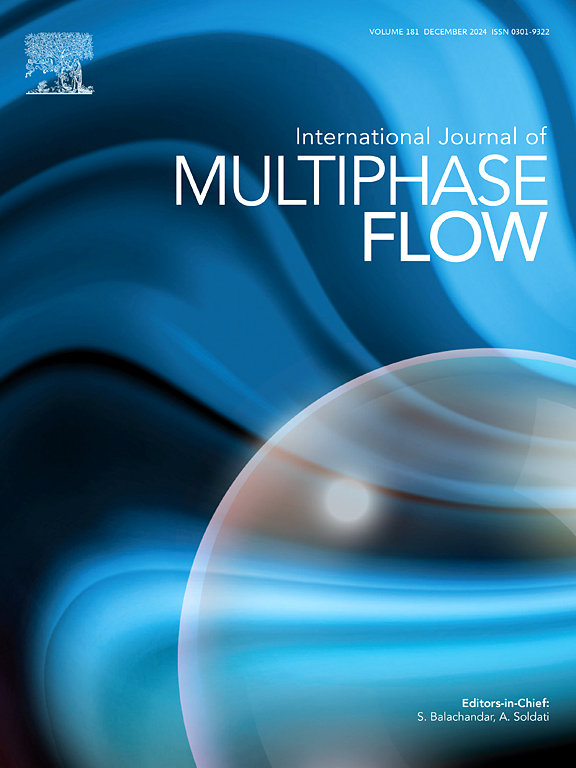压燃式发动机缸内气流对燃油汽化和混合气均匀性的影响
IF 3.8
2区 工程技术
Q1 MECHANICS
International Journal of Multiphase Flow
Pub Date : 2025-07-22
DOI:10.1016/j.ijmultiphaseflow.2025.105373
引用次数: 0
摘要
通过对柴油机喷射过程的冷模拟,研究了气缸内气流形态和喷油条件对压缩点火发动机性能的影响。通过对燃油系统流动与喷雾形成的耦合模拟,分析了不同工况下的喷雾特性。首先,使用零维模型模拟燃油系统,然后对不同喷射压力和气流模式下的燃油喷射进行三维分析。考虑了三种类型的缸内气流-旋流,翻滚和非旋转-来评估燃料在气缸腔内的分布。此外,还评估了喷射压力对汽缸工况和燃油蒸气穿透的影响。结果表明,将喷射压力从400 bar提高到1600 bar,可提高燃油汽化效率,循环结束时气相提高约0.4 g,表明混合过程更加高效。此外,与翻滚和非旋转流动相比,涡流流动促进了更好的空气-燃料混合均匀性,在整个气缸中提供了更高的燃料体积分数。因此,控制喷射压力的增加和涡流的使用可以提高发动机的效率。本文章由计算机程序翻译,如有差异,请以英文原文为准。

Influence of in-cylinder airflow on fuel vaporization and mixture uniformity in compression ignition engines
This study investigates the influence of in-cylinder airflow patterns and fuel-injection conditions on the performance of compression ignition engines through a cold simulation of diesel injection. A coupled simulation of the fuel system flow and spray formation was employed to analyze spray characteristics under various conditions. Initially, a zero-dimensional model was used to simulate the fuel system, followed by a three-dimensional analysis of fuel injection into the cylinder under different injection pressures and airflow patterns. Three types of in-cylinder airflows—swirl, tumble, and nonrotational— were considered to assess fuel distribution within the cylinder chamber. In addition, the effects of injection pressure on cylinder conditions and fuel vapor penetration were evaluated. The results indicate that increasing the injection pressure from 400 to 1600 bar enhances fuel vaporization, improving the vapor phase by approximately 0.4 g at the cycle end, indicating a more efficient mixing process. Furthermore, swirl flow promotes better air-fuel mixture uniformity compared to tumble and nonrotational flows, providing a higher volume fraction of fuel throughout the cylinder. Therefore, controlled increases in the injection pressure and the use of swirl flow improve engine efficiency.
求助全文
通过发布文献求助,成功后即可免费获取论文全文。
去求助
来源期刊
CiteScore
7.30
自引率
10.50%
发文量
244
审稿时长
4 months
期刊介绍:
The International Journal of Multiphase Flow publishes analytical, numerical and experimental articles of lasting interest. The scope of the journal includes all aspects of mass, momentum and energy exchange phenomena among different phases such as occur in disperse flows, gas–liquid and liquid–liquid flows, flows in porous media, boiling, granular flows and others.
The journal publishes full papers, brief communications and conference announcements.

 求助内容:
求助内容: 应助结果提醒方式:
应助结果提醒方式:


